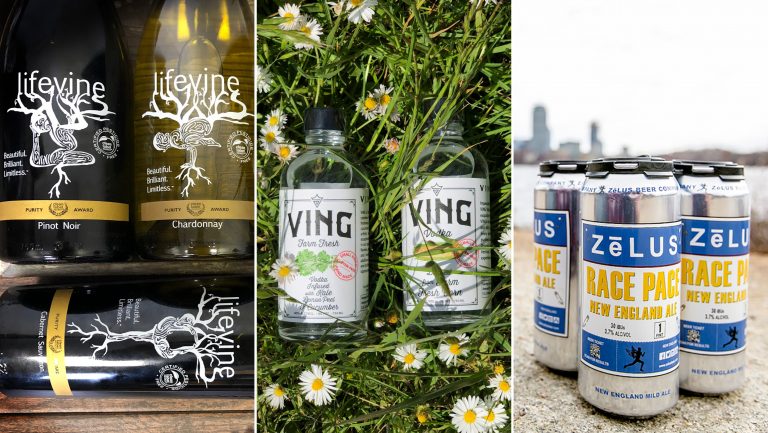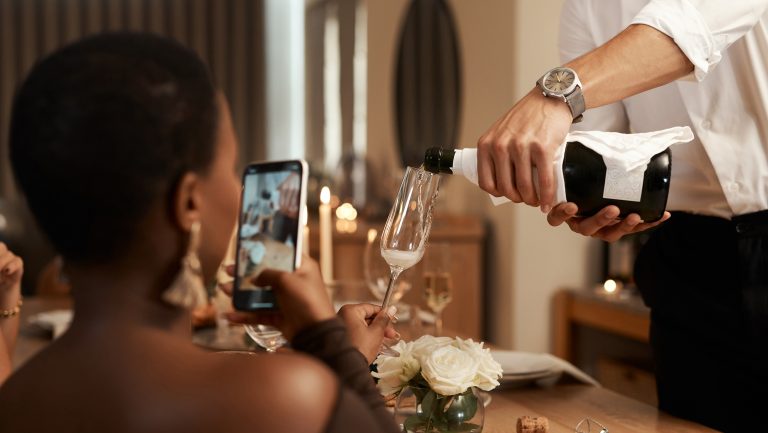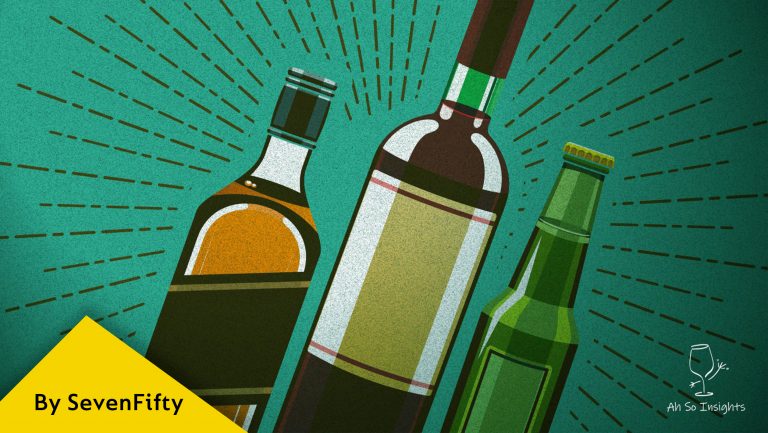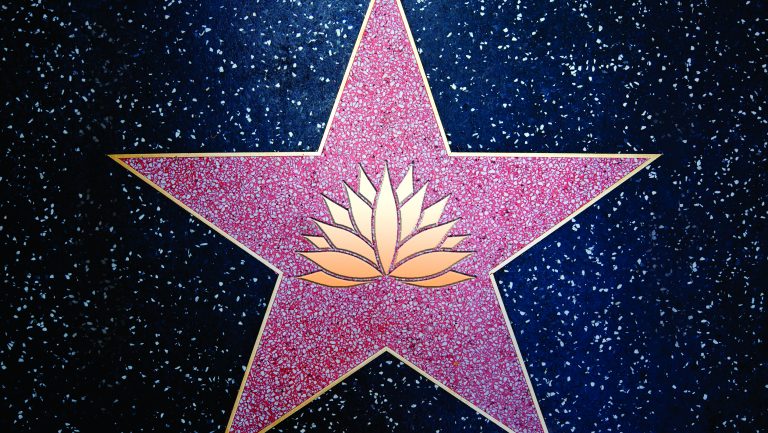On a crisp evening in late June, members of the Greater Neponset Running Club in eastern Massachusetts met at the taproom of Zelus Beer Company for Monday Mojo, a weekly summer run that ends at a bar. Toasting a run with a beer is a time-honored tradition—just look to the Bank of America Chicago Marathon, where pints of Goose Island have awaited finishers for more than a decade. But for Zelus, a brewery in the Boston suburb of Medfield, hosting runners isn’t just on brand. It is the brand.
The seven beers in Zelus’s portfolio include Long Run, a pale ale; Race Pace, a mild ale; and Lyte Speed, a hopped white ale. All are low in alcohol, between 3.7 and 5.3 percent, compared to 6 to 7 percent for most craft beers. All contain potassium, sodium, calcium, and magnesium—the hydrating components of sports recovery drinks, though brewers can’t call beer hydrating, according to Alcohol and Tobacco Tax and Trade Bureau (TTB) labeling regulations. Zelus goes with the term hydro-friendly.
The brewery isn’t alone. A new category of beverage alcohol products with a wellness bent—some targeted at athletes, others to those on the amorphous journey of eating and drinking “clean”—is ballooning. Craft beers are reducing ABV and adding ingredients found in sports drinks; wines and spirits are partnering with gyms and using wellness buzzwords like paleo, keto, honest, and natural.

Don’t miss the latest drinks industry news and insights. Sign up for our award-winning newsletters and get insider intel, resources, and trends delivered to your inbox every week.
Alcohol, of course, isn’t a health beverage. “You can’t think ‘I can have three glasses of this because it’s a healthy wine,’” says Jessica Levinson, a registered dietitian based in Westchester, New York. “People should not be looking at alcohol as something to drink for wellness purposes.”
But for many consumers, the buzzword is not healthy, but healthier. The mindset goes something like this: “I know I’m going to drink tonight, so I want the low-sugar wine.” As the wellness category continues to grow, bartenders, sommeliers and liquor store owners need to know how to respond to this customer.
The Players Amass
“Because our beer is low in alcohol…you can drink more, and enjoy it,” says Geoffrey Pedder, the founder of Zelus. That’s the point of the taproom, which opened in June. “We want to be a base for not just runners,” Pedder says, “but [a place where] people can meet up and they can talk about triathlons, they can talk about mountain biking.”

Avery Brewing, in Boulder, Colorado, released the electrolyte-infused Go Play IPA in July 2018. Sufferfest, based in San Francisco, which prints “Will sweat for beer” on its cans (including FKT, which has added salt, and Repeat, brewed with bee pollen), was acquired by Sierra Nevada, the third-largest craft beer producer in the U.S., according to the Brewers Association. The country’s second-largest producer, Boston Beer Company, launched Marathon Brewing Company in May. Its 26.2 Brew, a beer brewed with Himalayan sea salt and named for the distance of a marathon, was created in collaboration with two Boston Marathon winners.
Beyond beer, there’s Ving Vodka, infused with kale and billed as the “World’s Cleanest.” Gem & Bolt, a mezcal distilled with the damiana plant, which its founders claim is a natural antidepressant, markets itself as “a reflection of our deep care for what we take into our bodies.” Dry Farm Wines is a wine club that promotes its bottles—sourced from wineries around the world—as being “bio-hacked” to be keto-friendly, with less than one gram of sugar per liter. FitVine, also low in sugar, uses taglines like “We crush grapes, you crush life.” In June the Integrated Beverage Group, located in Denver, released a low-sugar wine called Lifevine, advertised as being made with “clean and honest ingredients,” with photographs of men and women doing yoga in the mountains. Shortly after launching, the brand announced a partnership with the national gym chain Life Time Fitness and is now sold in some of the gyms’ cafés.
You can look to Michelob Ultra, which first featured a runner in advertising in 2004, and in 2016, introduced the slogan “Brewed for those who go the extra mile” in an athlete-jammed Super Bowl ad, as a grandfather of the movement, but it got there almost by accident. When the beer launched in 2002, the intent was to reach an older demographic—”snowbirds,” a Michelob executive told the New York Times. Younger, athletic consumers latched on, and Michelob ran with it. This new generation of beer, wine, and spirits, on the other hand, was created with the wellness consumer in mind from the start.
Tenille O’Connor, the general manager of Canton Crossing Wine & Spirits in Baltimore, is one of many retailers around the country who has witnessed the increased demand for wellness labels. “A customer wanted a couple of bottles [of FitVine],” she says, “so I brought in a whole case, sold the customer what she wanted, and stocked the rest on the shelves. To my surprise, the brand just took off.”
The Rise of the Wellness Drinker
Zelus’s first beer, Competitor IPA, dropped in early 2017, after Pedder, a runner, realized that no craft brews had been developed for athletes. Go Play IPA, from Avery Brewing, originated in a similar way: The company’s founder, Adam Avery, wanted a beer with electrolytes, so he made one. “I’m a rock climber,” he says. “I ride a road bike, and my dad has run a bunch of marathons.” Caitlin Landesberg, the founder and CEO of Sufferfest, is a trail runner who, as Margaret Link, the director of marketing for Sufferfest, puts it, “set out and brewed the beer she wanted to see in the world.”
These origin stories help companies sell the health narrative without breaking the law. Many of them also leave out the realities of market research in the wellness space.
As the early athlete-focused alcohol brands were taking flight, the global wellness economy was growing. In 2015, consumers worldwide spent $3.7 trillion on wellness-related products and services, a 10 percent jump from 2013, according to data from the Wellness 2030 Report by the Global Wellness Institute, a trade group in Miami that monitors wellness trends. By 2017, that number was $4.2 trillion—another 13 percent jump. The GWI’s market analysis projects sustained growth; the wellness industry, the report’s authors say, is “still young.”
It made sense for alcohol brands to reach for a piece of the pie. “We don’t dream up big ideas and then try to sell them to the market,” says Ari Walker, the CEO of the Integrated Beverage Group. “It’s the other way around.”
With Lifevine, Walker began by considering what the industry calls the LOHAS consumer—that’s short for lifestyles of health and sustainability. He describes a LOHAS buyer as someone who might spend four dollars on a bag of potato chips because the potatoes were fried in avocado oil. “That consumer—about 17 percent of all consumers—is the number one target for us,” he says. “Every brand needs that passionate consumer. But if you take the lens back to 30,000 feet—as we developed Lifevine, we interviewed about 2,000 consumers, and the first question we asked was, ‘Do you care? Do you want a better-for-you wine?’ And what we found was that across every age cohort, millennials and non-millennials, interest in buying a healthy wine is over 90 percent—95 percent for millennials, 96 percent for non-millennials.”
Better-for-you is a vague survey term, and it’s hard to imagine any drinkers who would say they don’t want wine to somehow be better for them. But the data supported an initial run of 9,000 cases of Lifevine (3,000 each of Chardonnay, Pinot Noir, and Cabernet Sauvignon), distributed to stores and Life Time Fitness cafés in 22 states. Lifevine’s competitor, FitVine, is currently in stores nationwide, including dozens of Whole Foods locations. Dry Farm Wines—which doesn’t make its products but instead sources producer partners for its wine club—has about 30,000 club members across the country who receive shipments monthly or bimonthly, according to numbers the company provided last year. (A shipment comes with either 6 or 12 wines, made and bottled by mostly small producers like Claus Preisinger in Burgenland, Austria, and Bianka and Daniel Schmitt in Rheinhessen, Germany.)
Under Sierra Nevada’s ownership, Sufferfest has expanded its distribution, from limited retail in four states (California, Colorado, Oregon, and Washington) to distribution in more than 30 states, on- and off-premise. In September, the brand released Head Start, a 135-calorie stout brewed with coffee and coconut water.
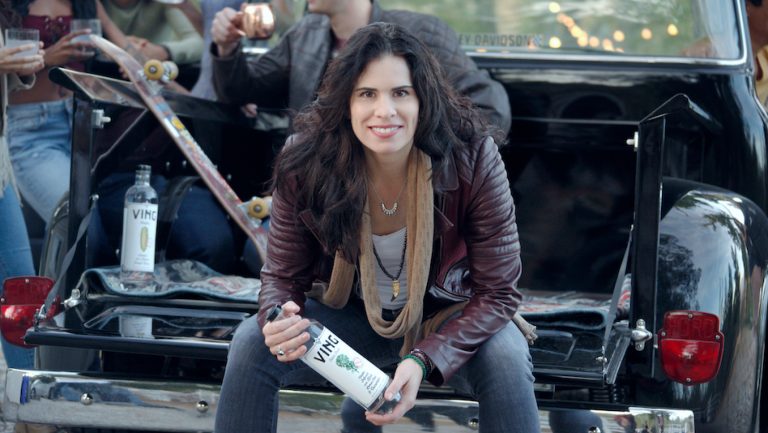
Zelus is staying small for now, distributing its beers only in Massachusetts and Connecticut. Ving Vodka, previously distributed in California and New York, has an eye on expansion this year. And Avery Brewing, which sells in 40 states, Japan, and Sweden, is expanding its wellness portfolio beyond Go Play IPA, a beer that’s caused some frustration for its creator.
“After I get done with a ride,” Avery says, “usually the first hydration that I go to is a beer out of my cooler. The thought [with Go Play] was an electrolytic beer that would help start that recovery process—but again, we can’t talk about it. So what are the things that the feds allow you to talk about? The next step would be calories and carbs.”
Avery’s Rocky Mountain Rosé, released last summer, and Pacer, a hazy IPA launched in October, both have 100 calories and 3 grams of carbohydrates. Coming later this year is “a barrel-aged, sour beer that has a superfruit in it,” probably Montmorency cherries, Avery says. Superfruit, of course, is another word that sounds healthy. From a legal standpoint, it’s ambiguous—like natural, clean, honest and hydro-friendly.
Labeling Red Tape
The TTB has strict regulations on associating alcohol with health benefits. They boil down to the obvious: You can’t say alcohol is healthy. (The fine print on what’s banned: “Any statement related to health, [including] statements of a curative or therapeutic nature that, expressly or by implication, suggest a relationship between the consumption of alcohol, distilled spirits, or any substance found within the distilled spirits, and health benefits or effects on health.”)
Still, these brands can place their products around photos of runners, cyclists, and yogis and use adjectives like better-for-you and honest, which have no legal definition. Any conclusions are up to the consumer, but the implication is clear.
“While we don’t say that we brew beer for athletes, we do say that we brew beer that’s inspired by athletes,” says Link, of Sufferfest. “We do not want to mislead the consumer. But at the same time, we’re adding really cool and innovative ingredients into our beer. And we want to be able to express that.”
Pedder, of Zelus, puts it a bit more clearly: “We have to be very careful about what we say, because we can’t make any health statements in regard to beer. I mean, journalists certainly can. But we can’t.”
The Truth Behind the Health Claims
Is there any validity in the idea of an electrolytic beer? In 2013, researchers from Griffith University in Queensland, Australia, revealed the surprising results of a lab study about beer: Cyclists who drank a 2.3% ABV beer with added salt (4,500 milligrams per liter) after a workout did show a spike in hydration. A 4.8% ABV beer with the same amount of added salt did not have any significant effect.
Dehydration is a fluid deficit. Simply put, you’ve sweat out more than you’ve taken in. Replenishing these fluids completely after exercise is a tall order—even a sports drink will get athletes only about 40 percent of the way there, according to a 2016 study conducted by the Division of Human Nutrition and Health at Wageningen University in the Netherlands. The Griffith study suggested that a low-alcohol electrolytic beer could also provide partial hydration—less than a sports drink but an upgrade from the average beer. “[M]any athletes are likely to engage in the consumption of beer following exercise regardless of the negative health implications,” the Australian researchers wrote. “A low-alcohol beer with added sodium may provide a compromise.”
The Griffith study was small—there were just seven subjects—but sound enough to be published in the International Journal of Sports Nutrition and Exercise Metabolism. Encouraged, the researchers organized a second experiment, to test different salt levels and alcohol percentages. Doubling the salt in the 2.3% ABV beer, to 9,000 mg/l, boosted hydration the most significantly. And although the 4.8% ABV beer in the first trial had not aided hydration, a 3.5% ABV beer with 9,000 mg/l salt did replenish some fluids. Somewhere in that ABV range, the beer had become too high in alcohol to improve a person’s hydration.
The magic number—the tipping point at which beer appears to hurt more than it helps—has been hard to determine. The best estimate to date comes from the University of Aberdeen, Scotland, where researchers concluded that “drinks containing 4 percent alcohol tend to delay the recovery process.” At that point, there’s enough alcohol for its diuretic effects to supersede any potential hydration. Meanwhile, the Netherlands scientists found that 2% ABV beer had roughly the same hydrating benefits as water.
Considering this, a runner who wants a beer may be better off with one that’s not even marketed to athletes—say, the dark lager from Small Beer Brew Co. (1%), one of the many super-low-alcohol brews popular in the U.K. right now. Yet, it’s beers like Avery’s Go Play and Sufferfest’s FTK (both 5.5%), Marathon Brewing’s 26.2 (4%), and Boulevard Brewing Company’s Easy Sport (4.1%), marketed as “a beer brewed for runners, cyclists, hikers, pickleball players, karate masters, yogis, disc golfers, ball golfers, yard mowers, jazzercisers, and people who are just plain thirsty,” that are winning over the U.S. Levinson says, “These are companies going to the extreme with marketing for the purpose of getting people to pay attention to them.”
Ving Vodka, similarly, has its paleo-friendly hashtags and Insta stories. Keel Vodka prints “gluten free” on its bottle below the tagline “Stay balanced.” “But basically any vodka could claim to be paleo friendly,” Levinson says. Gluten and sugar, the offending ingredients, are stripped out during distillation. (The exception would be a vodka that adds sugar after distillation, which may be the case with some flavored vodkas.)
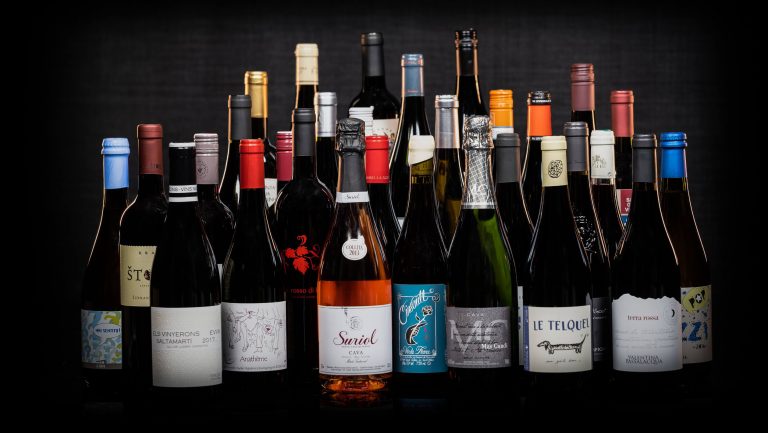
Wellness-focused wine comes down to the same bottom line. FitVine, Lifevine, and Dry Farm Wines advertise the low sugar content of their wines as being friendly to yogis, gym goers, and those on the keto diet. But all wines classified as dry have minimal sugar, thanks to a complete fermentation that allows the yeast to eat almost all the sugars in the grapes. As with beer and spirits, retailers can steer the wellness-minded consumer past these overtly branded options. “There are many wines that are lower in sugar,” Levinson says, “wines that are not being made specifically for the purpose of saying, ‘We’re good for drinking after you work out.’”
But to Pedder, the Zelus founder, his “hydro-friendly” beer gets at something deeper than electrolytes-that-shall-not-be-named. Back in Zelus’s taproom on that summer night, 18 cheerful runners, and one junior run club member in a stroller, beamed at a smartphone camera for posterity. The Greater Neponset Running Club had joined forces with runners from The Soles of Medfield, another running club, for the night, and the two groups were gelling. “This whole concept is not just about benefits the beer may or may not have,” Pedder says. “[It’s] just as much about building community with the active world.”

Dispatch
Sign up for our award-winning newsletter
Don’t miss the latest drinks industry news and insights—delivered to your inbox every week.
Marissa Conrad is a freelance journalist who covers culture. Learn more at marissaconrad.com.

